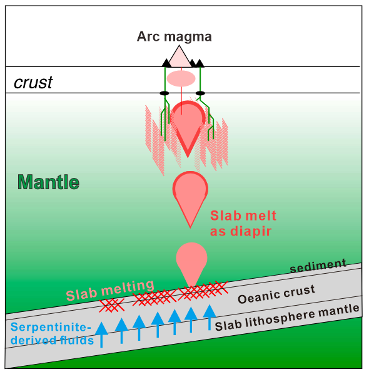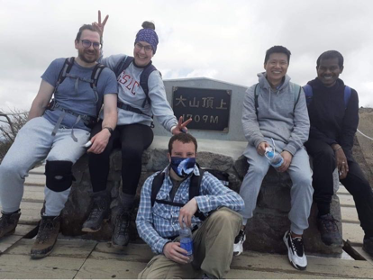Essay by Dr. Wei Zhang
03/01/2023
- Wei Zhang (2023) Hf-B-Li-Mg isotope systematics of late Cenozoic volcanic rocks from the Chugoku district, Southwest Japan: Implications for the property and transport mechanism of slab-derived fluids in the subduction zone.
- Related paper: Zhang et al. (2022) A rapid method of simultaneous chromatographic purification of Li and Mg for isotopic analyses using MC-ICP-MS, International Journal of Mass Spectrometry, 480, 116893 (2022),
doi:10.1016/j.ijms.2022.116893.
Highlight of thesis
In my study, I investigated the Hf, B, Li, and Mg isotope compositions of late Cenozoic volcanic rocks from the Chugoku district in SW Japan to trace the evolution and variation of fluids beneath this region. My study reaffirms the temporal variation of slab-released fluids beneath the Chugoku district, highlights the importance of serpentinite-derived fluids to promote the hydrous melting of subducted slab, confirms the potential of Li isotopes to trace the slab signals, and clarifies the role of Mg isotope fractionation during slab melting and subsequent melt-mantle interaction. The results from my study contribute to the overall development of using fluid-mobile and -immobile isotopic system to trace crustal recycling and fluid properties in the subduction zones.

Life in our laboratory
When I first came to this lab, I marveled at the diversity of this team. Although there are not many people, they come from nearly 10 different countries. Secondly, I am also amazed at the rigor of the laboratory. I have worked in a laboratory in China, so I am amazed that this laboratory in a mountain village in Japan has world-class experimental equipment and experimental environment. Teachers, not older students, patiently teach new students how to do experiments safely over and over again. Unlike China's laboratories, there are plenty of opportunities to do experiments here. The teachers also feel very supportive of the students' own ideas. Before the epidemic, we also had a lot of parties, where teachers and students could frequently exchange their academic and life experiences. Even living in a mountain village is very interesting. I still miss those parties very much. I feel it has been a great and unforgettable memory in my life.
